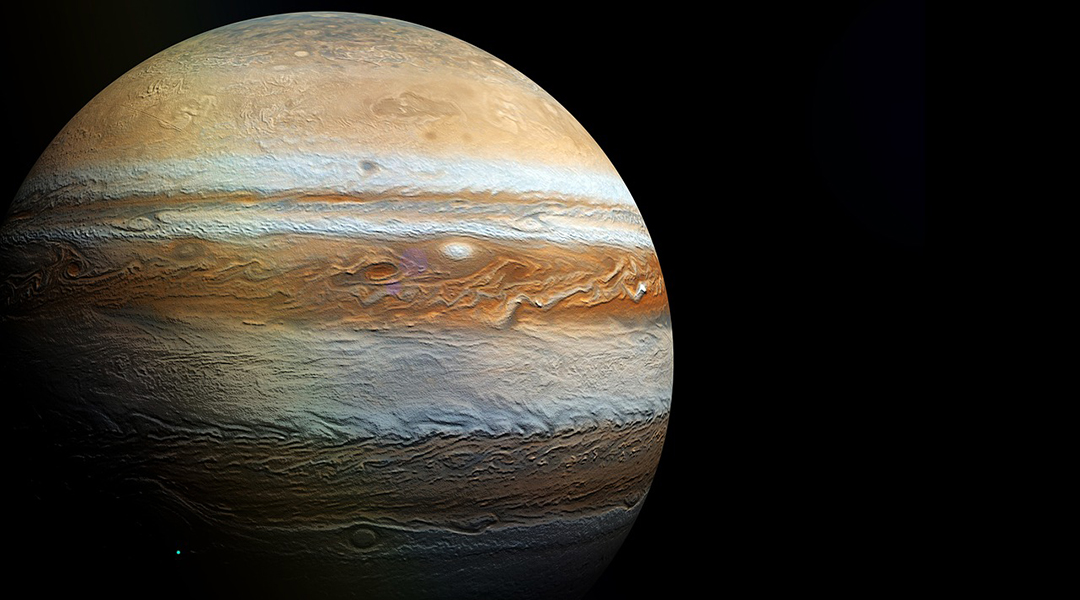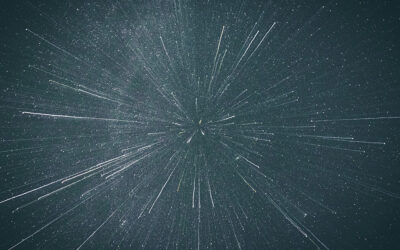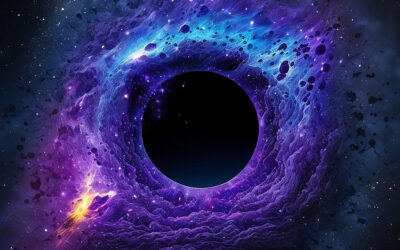A new study proposes directing the search for dark matter toward the atmospheres of Jupiter and Jupiter-like exoplanets.
Jupiter, being the heaviest planet in our solar system, could be attracting dark matter particles that collide to produce high energy particles in the form of ionizing radiation. This would lead to higher than normal levels of ionized hydrogen atoms in the form of trihydrogen cations (H3+) — ions composed of three hydrogen nuclei and only two electrons.
“These ions are highly abundant throughout the Universe, and are produced from H2 interactions with cosmic rays, stellar irradiation, planetary lightning, or electrons accelerated in planetary magnetic fields,” wrote the scientists, Carlos Blanco and Rebecca Leane, in their paper. “Planetary H3+ levels have been extensively studied, and they are important as they provide vital insights into atmospheric temperature, as well as a tracer of electric currents running through the atmosphere.
“The production of trihydrogen cations due to ionizing radiation was first confirmed spectroscopically in the [atmosphere] of Jupiter, using the Voyager ultraviolet spectrometer experiment.”
Proof might already have been collected by the Cassini probe
These cations emit detectable levels of infrared radiation, which the team thinks could be detectable in the data gathered by the Cassini probe, which flew past Jupiter in 2000 en route to its mission on Saturn.
“We execute our [dark matter] ionization search using Cassini’s [visual and infrared mapping spectrometer] flyby data of Jovian [atmospheric] trihydrogen cations,” the scientists wrote. “We target Jupiter as it is the most efficient dark matter captor compared to Saturn or other planets.”
“To optimize signal […], we study Cassini data taken three hours either side of Jovian midnight, which eliminates the solar [ionizing] irradiation background. We also focus on low-latitude data, as latitudes near the poles are subject to the intense Jovian magnetic fields, which produce ionizing auroras which are a significant source of [trihydrogen cations].”
Their analysis did reveal trihydrogen cations but its still unclear if this can be linked to dark matter or background levels generated by other sources. These include cations produced by the interaction of hydrogen with high-energy cosmic particles, stellar radiation, planetary lightning, electrons accelerated in Jupiter’s magnetic fields, and ionizing radiation deposited into Jupiter’s atmosphere from volcanic eruptions of Jupiter’s third largest moon, Io.
A promising start
Although the team did not obtain the definitive and hoped for results , it helped set more stringent constraints on the interaction strength of these particles. This can be valuable for other future experiments seeking to study this enigmatic piece of matter.
There is also still the possibility that this approach could still yield positive results with the next generation of scientific spacecraft.
“Improved Jovian measurements compared to Cassini are planned in the 2030s with the European Space Agency’s Jupiter Icy Moons Explorer (JUICE), which may allow increased sensitivity to [dark matter] ionization,” they said.
In addition, the scientists believe their method can be applied to other Jovian exoplanets. Although these planets are much further from Earth than Jupiter, many are significantly larger, making them potentially better dark matter captors.
Those located at the center of our galaxy, where the dark matter density is expected to be higher, should be able to capture dark matter even more efficiently.
“Although optimistic, a future spectral measurement of exoplanets in the inner Galaxy with, [for example, James Webb Space Telescope], the Roman Space Telescope, or a future more sensitive telescope could realize the exoplanetary sensitivities,” they concluded.
Reference: Carlos Blanco and Rebecca K. Leane, Search for Dark Matter Ionization on the Night Side of Jupiter with Cassini, Physical Review Letters (2024). DOI: 10.1103/PhysRevLett.132.261002
Feature image credit: GustavoAckles on Pixabay

















